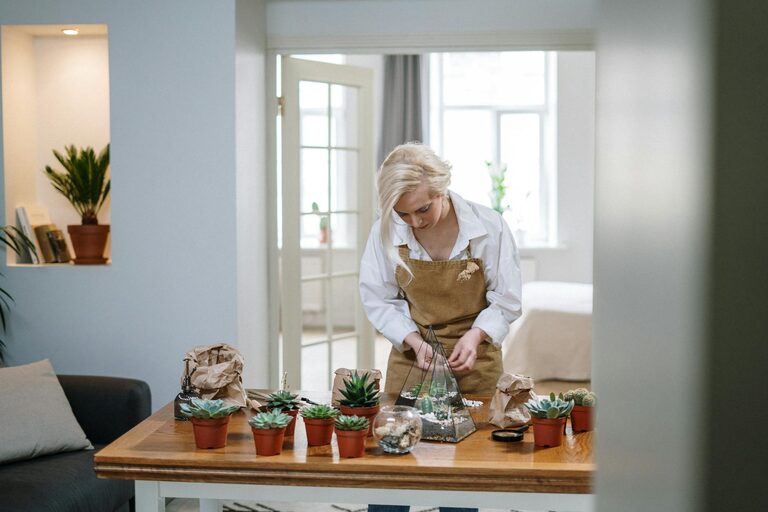
Bringing houseplants into your home can brighten up any space and improve air quality. However, keeping these green companions healthy requires some attention and care. Whether you are new to houseplants or have a growing collection, understanding the basics of plant care can help your indoor garden flourish. In this post, we’ll explore practical tips to keep your houseplants healthy and vibrant.
Understand Your Plant’s Needs
Know the Light Requirements
Different plants have varying light needs, which is one of the most important factors for their health.
– Low Light Plants: Some plants, like snake plants and pothos, thrive in indirect or low light areas.
– Medium Light Plants: Spider plants and peace lilies prefer bright but indirect sunlight.
– High Light Plants: Succulents and cacti require direct sunlight to grow well.
Place your plants according to their light preferences and consider rotating them occasionally to ensure even growth.
Watering Wisely
Overwatering is a common mistake that can harm houseplants.
– Check the soil moisture before watering by sticking your finger about an inch into the soil. If it feels dry, it’s time to water.
– Use pots with drainage holes to prevent water from pooling at the roots.
– Different plants have different watering schedules; succulents need less water, while ferns prefer more humidity and moisture.
Choose the Right Soil and Pot
Choosing appropriate soil and pots plays a crucial role in plant health.
– Use well-draining soil suited for your specific plant. For example, cactus mix for succulents and peat-based soil for tropical plants.
– Repot plants every 1–2 years to refresh the soil and allow room for growth.
– Make sure pots have drainage holes to avoid root rot.
Maintain Proper Humidity and Temperature
Humidity Levels
Many houseplants, especially tropical varieties, thrive in higher humidity.
– Increase humidity by misting plants with water, using a humidity tray, or placing a humidifier nearby.
– Grouping plants together also helps create a microenvironment with higher humidity.
Ideal Temperatures
– Most houseplants prefer temperatures between 65°F and 75°F (18°C–24°C).
– Avoid placing plants near drafts, heaters, or air conditioners, as sudden temperature changes can stress them.
Prune and Clean Your Plants
Regular maintenance keeps your plants healthy and attractive.
– Pruning: Remove dead, yellowing, or damaged leaves to promote new growth and improve air circulation.
– Cleaning: Dust build-up on leaves can block sunlight. Wipe leaves gently with a damp cloth or shower plants under gentle water spray periodically.
Fertilize Plants Appropriately
Fertilizing provides essential nutrients for plant growth.
– Use a balanced, water-soluble fertilizer during the growing season (spring and summer).
– Follow the package instructions carefully to avoid over-fertilization, which can damage roots.
– Many plants require little to no fertilizer during dormant winter months.
Monitor for Pests and Diseases
Houseplants can occasionally be affected by pests or diseases.
– Check leaves and soil regularly for signs of pests such as spider mites, aphids, or mealybugs.
– Use natural remedies like neem oil or insecticidal soap when treating infestations.
– Remove any affected leaves and isolate the plant if necessary to prevent spreading.
Tips for Specific Plant Types
Succulents and Cacti
– Require bright light and infrequent watering.
– Use well-draining soil and pots with drainage holes.
– Avoid cold temperatures and high humidity.
Tropical Plants
– Need moderate to bright indirect light and higher humidity.
– Water regularly but avoid soggy soil.
– Mist leaves to increase humidity.
Ferns
– Prefer indirect light and consistently moist soil.
– High humidity is essential.
– Avoid direct sunlight, which can scorch delicate fronds.
Final Thoughts
Keeping houseplants healthy is rewarding and can enhance your living space. By understanding your plants’ specific needs—light, water, soil, and humidity—you can create an environment that encourages growth and vitality. Regular care, attention, and a little patience will help your indoor garden thrive, making your home feel fresh and lively throughout the year.
Happy planting!
